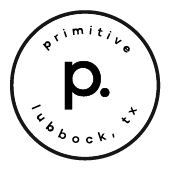BLOG The Stages of Inbound Marketing and What to Focus On: Attract
The Stages of Inbound Marketing and What to Focus On: Attract
POSTED BY The Prim Pack | Sep 16, 2020

Whether it’s budgeting, wellness, or even marketing your business, sometimes the best option to work towards progress is...to get back to the basics.
So, when speaking on inbound marketing and all of its many tools, updates, and trends, we know how easy it is to lose sight of the point of it all.
To help refresh our memories and gain a deeper, more comprehensive understanding of the fundamentals, we’re launching a new series to help us all get back to the basics of inbound marketing. We’ll explore the different stages of inbound marketing – attract, engage, delight – and what you should focus on with each one.
First up? The attract stage.
What is the Attract Stage?
The attract stage is very much what it sounds like: it’s the beginning of a prospect’s decision-making process and is all about attracting new, qualified leads to your business. The way in which these visitors might find your company can vary but oftentimes they might find you through a search engine query, a social media post, or even a referral from a friend.
In order to really get the ball moving for your business and gather as much momentum as possible, it’s critical to prove your worth in this stage. This is done by being hyper-focused on: your target audience (your customer), your keywords, and your content.
Focus on your customers
Take a moment to think about your marketing strategies around creating content.
Are you already laser-focused on your consumer or would a lot change if you were asked to pivot directions and gear your strategies towards your target audience?
As a marketer, there are easily dozens of tasks that fill your days: strategies need to be built and executed, content needs to be created and distributed, social channels need to be monitored, emails need to be answered, and so much more. This list doesn’t even take into account the testing of new tools like AI or chatbots, or time to get creative with new mediums like video and podcasts.
But, all this to say, shifting our mindset towards our clients is often what we need to do to get the ball moving, and continue picking up steam for your organization.
Even though we’ve just stated that you need to add focusing on your customers to your long list of to-dos, it doesn’t mean you need to lose focus on your business.
In fact, it’s quite the opposite.
Shifting the spotlight to your clients all starts by creating your buyer personas, which are fictitious representations of your ideal customer. Buyer personas cover demographics, job industries and positions, communication preferences, and more.
Instead of casting a wide net and hoping for the best, focusing on your customers alleviates the stress that comes with a “what if they hear/read this” mentality, while simultaneously knocking out any wasted time that comes with fuzzy communication strategies.
By lasering in this focus, first, your teams can prioritize your organization’s message and virtually guarantee the people you want to hear it, will.
Essentially, focusing on your customers shapes how you share, and position, your business.
It’s a win-win.
Focus on your keywords
After you’ve devoted the time to develop a representation of your ideal customer (buyer personas) you are more capable of actually thinking like your customer.
This adopted way of thinking is extremely valuable for every aspect of your marketing strategy, but it’s especially important when building out your keyword strategy.
What exactly is a keyword strategy?
It’s how your team narrows down the exact words and phrases your ideal customer uses when they search online for a solution to their problem.
While keywords and all things Search Engine Optimization (SEO) can come across as daunting, there are many tools available to help you narrow down the right keywords for your content. Some of our favorites include:
Focus on your content strategy
After identifying your buyer personas and keywords, you can begin to build your content by brainstorming topics and asking questions that form the backbone of your content marketing strategy.
The content topics you and your team arrive upon serve as the pillars for every piece of content you publish. A few questions you and your team can begin asking yourselves, in order to formulate more relevant content for your target audiences, are:
- Who (persona or personas) is reading this content?
- What problems are you trying to solve for your audience?
- What position(s) will you take to make your content unique within your industry?
- Is there a specific format for your content that you will focus on? (Video, blogs, infographics, etc.)
- What channels will you choose to display your content?
After creating the pillars of your content, your team can get busy creating and distributing content offers and blog posts that help solve visitors’ problems and provide value for them time and again.
The more you are consistently valuable to your visitors, the more you will earn their trust and their loyalty.
Looking to produce more leads for your company? Download our free guide How to Generate Leads for Your Business.
SHARE THIS POST:

About the writer, The Prim Pack
Primitive is a full-service digital agency specializing in strategy, branding, web development, and technology solutions. With a passion for innovation and a commitment to helping businesses grow, our team crafts digital experiences that make an impact.
